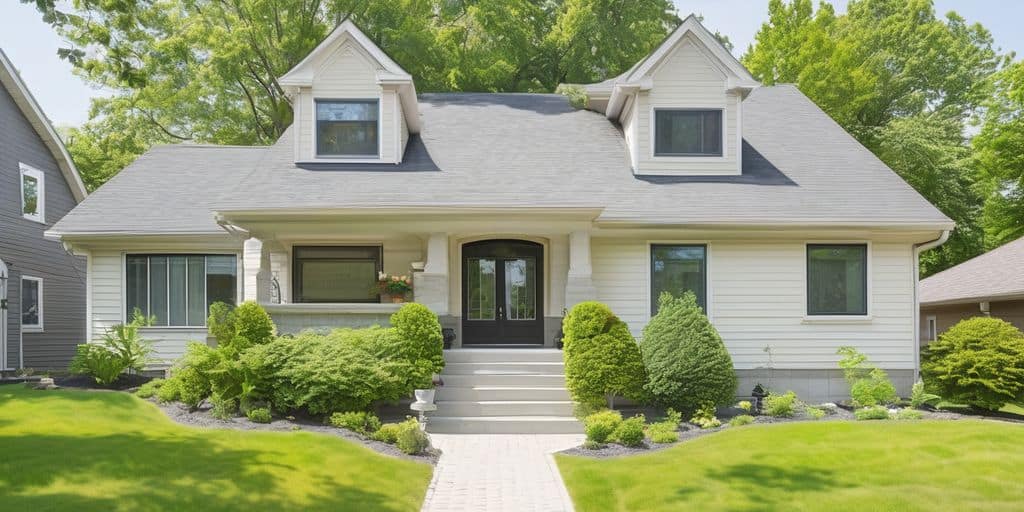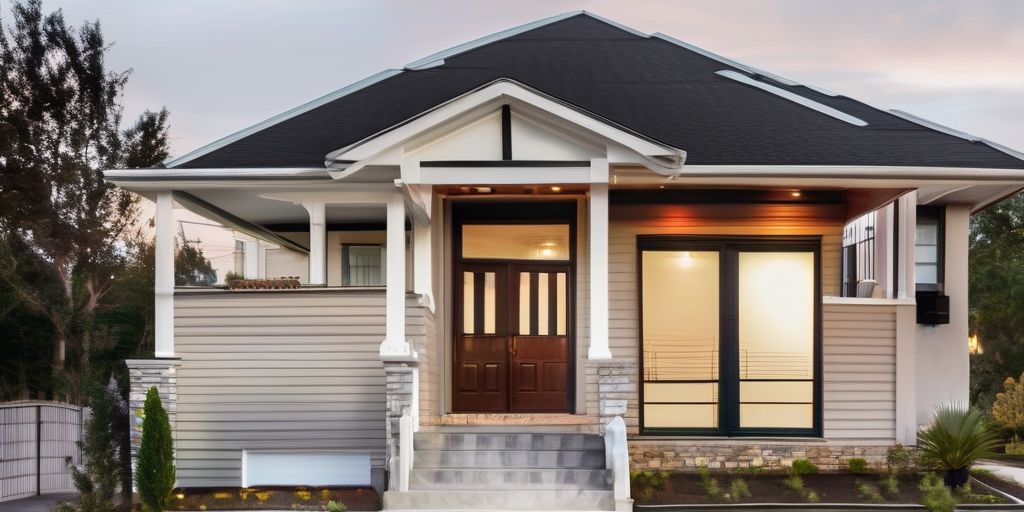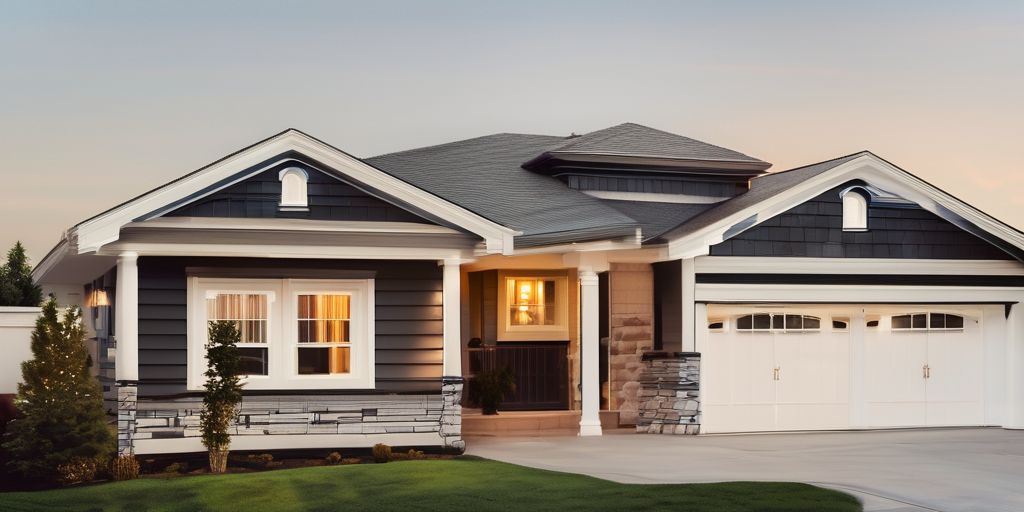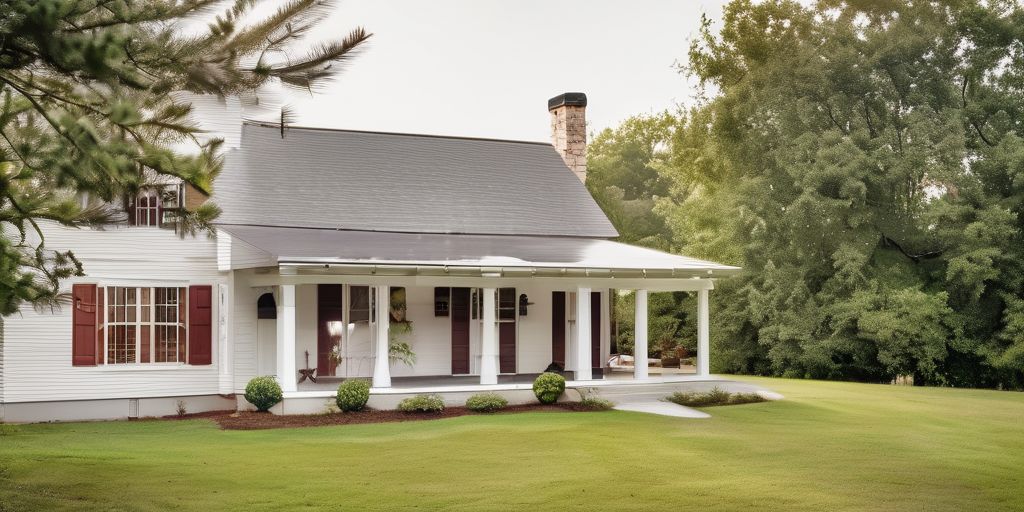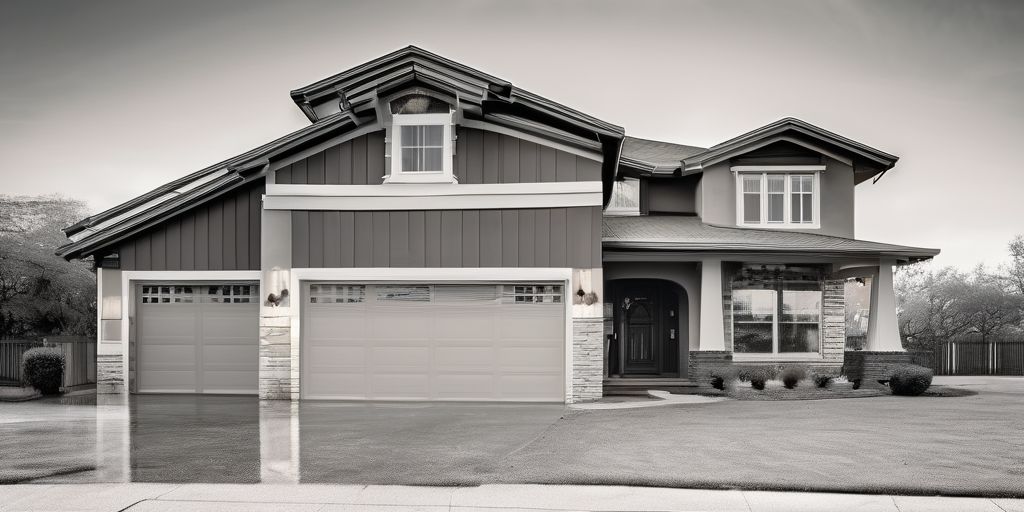In the realm of exterior spray painting, the application of primer is a crucial preliminary step that ensures the durability and aesthetic quality of the paint job. This article explores the importance and methodology of using primer specifically in exterior spray painting projects, offering insights into the types of primers available, application techniques, and troubleshooting common issues.
Key Takeaways
- Primer enhances the durability and appearance of the final paint job by ensuring even coverage and adhesion.
- Choosing the right primer for different surfaces, such as wood, metal, and masonry, is essential for optimal results.
- Proper surface preparation, including cleaning and sanding, is crucial before applying primer.
- Mississauga’s weather conditions, including humidity and temperature, play a significant role in the success of an exterior spray painting project.
- Avoid common mistakes such as skipping surface preparation, applying primer too thickly, and not allowing enough drying time.
Understanding the Importance of Primer in Exterior Spray Painting
When it comes to exterior spray painting, the role of primer is indispensable. Primer helps your paint adhere better to the surface, ensuring better coverage with fewer coats. This not only saves time but also enhances the durability and appearance of the final paint job. Whether you’re a professional or a DIY enthusiast, understanding the importance of primer can make a significant difference in your project’s success.
Enhancing Paint Adhesion
Primer acts as a bonding agent between the surface and the paint. This is particularly important for exterior surfaces exposed to varying weather conditions. By using primer, you ensure that the paint adheres more effectively, reducing the chances of peeling and flaking.
Improving Durability and Longevity
A good primer increases the longevity of your paint job. It provides an additional layer of protection against environmental factors such as UV rays, rain, and humidity. This is especially crucial in areas like Mississauga, where weather conditions can be unpredictable.
Achieving a Smooth Finish
Primer helps in filling in minor imperfections on the surface, creating a smooth base for the paint. This results in a more even and professional-looking finish. Proper surface preparation techniques, including the use of primer, are essential for efficient and durable results.
Selecting the Right Primer for Different Surfaces
Choosing the appropriate primer is essential for the role of primer in successful exterior spray painting in Mississauga. Different surfaces require specific types of primers to ensure optimal adhesion, durability, and a smooth finish. Here’s a guide to help you select the right primer for various surfaces.
Primers for Wood Surfaces
When it comes to wood surfaces, selecting a primer specifically designed for wood is crucial. Oil-based primers are excellent for high-adhesion needs and are particularly effective on wood. They provide a solid foundation for the topcoat, enhancing both appearance and protection. Water-based primers are easier to clean and are good for soft woods that may absorb oil from oil-based products.
Primers for Metal Surfaces
Metal surfaces require primers that can prevent rust and ensure strong adhesion. Oil-based primers are often recommended for metal due to their durability and excellent adhesion properties. For metal surfaces exposed to harsh weather conditions, consider using a rust-inhibitive primer to provide extra protection.
Primers for Masonry and Concrete
Masonry and concrete surfaces are porous and require primers that can seal the surface and provide a uniform base for the topcoat. Acrylic latex primers are a popular choice for these surfaces as they offer good adhesion and flexibility. For areas with high moisture, consider using a primer with mildew-resistant properties to prevent mold growth.
Remember, selecting the right primer can make a significant difference in the durability and appearance of your exterior painting project.
Understanding the importance of primer for adhesion, durability, and longevity is key to achieving a professional finish. Whether you’re working on wood, metal, or masonry, the right primer will ensure your paint job stands the test of time.
Step-by-Step Guide to Applying Primer
Applying primer correctly is essential for a successful exterior spray painting project. Follow these steps to ensure a smooth and efficient application process.
Surface Preparation Tips
Proper surface preparation is crucial for a successful primer application. Ensure the surface is clean, dry, and free of any loose material such as dirt, dust, and old paint. Here are some steps to follow:
- Clean the surface thoroughly.
- Sand any rough areas to create a smooth substrate.
- Repair cracks and holes to ensure an even surface.
- Mask off surrounding areas to protect them from overspray.
Safety is also paramount. Always wear protective gear such as gloves, masks, and safety glasses.
Application Techniques
Proper technique is key to achieving a professional finish. Here’s how to spray primer effectively:
- Start moving the spray gun before you pull the trigger to avoid excess buildup at the start.
- Maintain a consistent distance and angle to the surface throughout the application.
- Use steady, even strokes to apply the primer, ensuring complete coverage without over-application.
Drying and Curing Times
Allowing the primer to dry and cure properly is essential for the longevity of your paint job. Follow these guidelines:
- Check the manufacturer’s instructions for specific drying times.
- Ensure the primer is completely dry before applying the topcoat.
- Consider weather conditions, as humidity and temperature can affect drying times.
By following these detailed steps, you can ensure that your primer application is successful and your equipment remains in excellent condition for future projects.
Weather Considerations for Exterior Spray Painting in Mississauga
Impact of Humidity and Temperature
Mississauga’s weather can be quite unpredictable, making it essential to plan your spray painting projects with care. High humidity levels can significantly affect the drying time of the paint, leading to potential issues like blistering or peeling. On the other hand, extremely low temperatures can cause the paint to thicken, making it difficult to apply smoothly. Always check the weather forecast before starting your project to avoid these complications.
Best Seasons for Spray Painting
In Mississauga, the ideal time for exterior spray painting typically spans from late spring to early fall. During these months, the weather is generally more stable, with moderate temperatures and lower humidity levels. This period ensures that the paint adheres well and dries properly. However, always be mindful of sudden weather changes, especially in areas close to Lake Ontario, which can bring unexpected moisture.
Weatherproofing Your Paint Job
To ensure the longevity of your paint job, consider weatherproofing techniques. Using a high-quality primer can help protect the surface from moisture and temperature fluctuations. Additionally, applying a weather-resistant topcoat can provide an extra layer of protection against the elements. These steps are crucial for maintaining the durability and appearance of your exterior surfaces.
Proper planning and execution can help mitigate the challenges posed by Mississauga’s unpredictable weather, ensuring a successful and long-lasting paint job.
Common Mistakes to Avoid When Using Primer
Skipping Surface Preparation
One of the most common mistakes is neglecting proper surface preparation. Whether your exterior trim is new or old, the paint will not adhere properly if the surface is not clean. Dirt, dust, pollen, and other contaminants can prevent the primer from bonding effectively. Always clean the surface thoroughly before applying primer.
Applying Primer Too Thickly
Applying a thick coat of primer might seem like a good idea, but it can lead to drips and runs. To prevent these issues:
- Apply thin, even coats rather than a single thick coat.
- Allow adequate drying time between coats.
- If drips occur, sand them down once the primer is dry before applying the next coat.
Not Allowing Enough Drying Time
Rushing the drying process can ruin the look of your paint job. Unsightly paint streaks on walls can ruin the look of a room. Make sure to follow the manufacturer’s recommended drying times to ensure the primer sets properly. This is especially important in areas with high humidity, like Mississauga, where drying times can be longer.
Properly applied primer is the foundation of a successful paint job. Taking the time to avoid these common mistakes will result in a more durable and aesthetically pleasing finish.
Troubleshooting Primer Issues
Dealing with Uneven Coverage
Ensuring even coverage when applying primer is crucial for a professional-looking finish. Here are some tips to help you achieve this:
- Apply thin, even coats rather than a single thick coat.
- Maintain a consistent distance between the spray nozzle and the surface.
- Overlap each pass slightly to avoid missed spots.
- If uneven coverage occurs, lightly sand the area and reapply the primer.
Fixing Primer Peeling
Primer peeling can be a frustrating issue, but it can be addressed effectively:
- Ensure the surface is clean and free of contaminants before application.
- Avoid applying primer in high humidity or extreme temperatures.
- Allow adequate drying time between coats.
- If peeling occurs, remove the peeling primer, sand the area, and reapply.
Addressing Primer Stains
Stains can sometimes bleed through primer, affecting the final paint job. To tackle this problem:
- Use a stain-blocking primer specifically designed for this purpose.
- Apply multiple coats if necessary to fully cover the stain.
- Ensure the primer is fully dry before applying the topcoat.
By following these detailed steps, you can ensure that your primer application is successful and your equipment remains in excellent condition for future projects.
Benefits of Using Primer in DIY Projects
Cost-Effectiveness
Using primer in your DIY projects can be highly cost-effective. Primers help in reducing the number of paint coats needed, which can save you money on paint. Additionally, primers can help in covering stains and imperfections, reducing the need for expensive surface repairs.
Ease of Application
Primers are generally easy to apply, making them ideal for DIY enthusiasts. They can be applied using various methods such as brushing, rolling, or spraying. This flexibility allows you to choose the method that best suits your project and skill level. Moreover, primers dry quickly, enabling you to move on to the painting stage sooner.
Professional-Looking Results
Achieving a professional-looking finish is one of the main benefits of using primer. Primers create a smooth and even surface, which enhances the adhesion and appearance of the topcoat. This is particularly important for exterior projects in areas like Mississauga, where weather conditions can affect the final outcome. A well-primed surface ensures that your paint job looks flawless and lasts longer.
Proper primer application is crucial for addressing rust concerns before repainting aluminum siding in Niagara Falls. Consider weather conditions for project success.
Using primer in your DIY projects can significantly enhance the durability and finish of your work. It ensures better adhesion of paint, provides a uniform surface, and can even help in covering up minor imperfections. Ready to take your DIY projects to the next level? Visit our website for more tips and professional advice!
Conclusion
In conclusion, the role of primer in exterior spray painting projects cannot be overstated. From enhancing the durability and appearance of the final paint job to ensuring even coverage and adhesion, primer serves as an essential foundation for any successful painting project. Whether you’re a seasoned professional or a DIY enthusiast, understanding and utilizing the right primer can make all the difference in achieving a flawless finish. Remember, a little extra time spent on proper surface preparation, including the application of a suitable primer, can lead to a long-lasting and visually appealing result. In Mississauga, where weather conditions can be unpredictable, taking these steps is even more critical to ensure your exterior spray painting project stands the test of time.
Frequently Asked Questions
What is primer and why is it important for exterior spray painting?
Primer is a preparatory coating applied to surfaces before painting. It ensures better adhesion of paint, increases paint durability, and provides additional protection for the material being painted. Primer is crucial for achieving an even finish and enhancing the overall appearance and durability of the paint job.
How do I choose the right primer for my exterior painting project?
Choose a primer that is compatible with the surface material and the type of paint you will be using. For example, wood surfaces may require a different primer than metal surfaces, which often need a rust-inhibiting primer.
What are the steps for proper surface preparation before spray painting?
Proper surface preparation includes cleaning, sanding, and priming the surface. These steps are crucial to avoid paint failure and achieve a long-lasting finish.
How does the weather in Mississauga affect exterior spray painting?
Mississauga’s weather can be unpredictable, with varying humidity and temperature levels. It’s important to check the weather forecast and choose the best season for spray painting to ensure optimal results. Weatherproofing your paint job can also help mitigate the effects of adverse weather conditions.
What are common mistakes to avoid when using primer?
Common mistakes include skipping surface preparation, applying primer too thickly, and not allowing enough drying time. These errors can lead to poor adhesion, uneven coverage, and a less durable paint job.
Why is primer beneficial for DIY projects?
Using primer in DIY projects is cost-effective, easy to apply, and helps achieve professional-looking results. It enhances paint adhesion, durability, and provides a smooth base for the topcoat, making your DIY project look polished and long-lasting.

